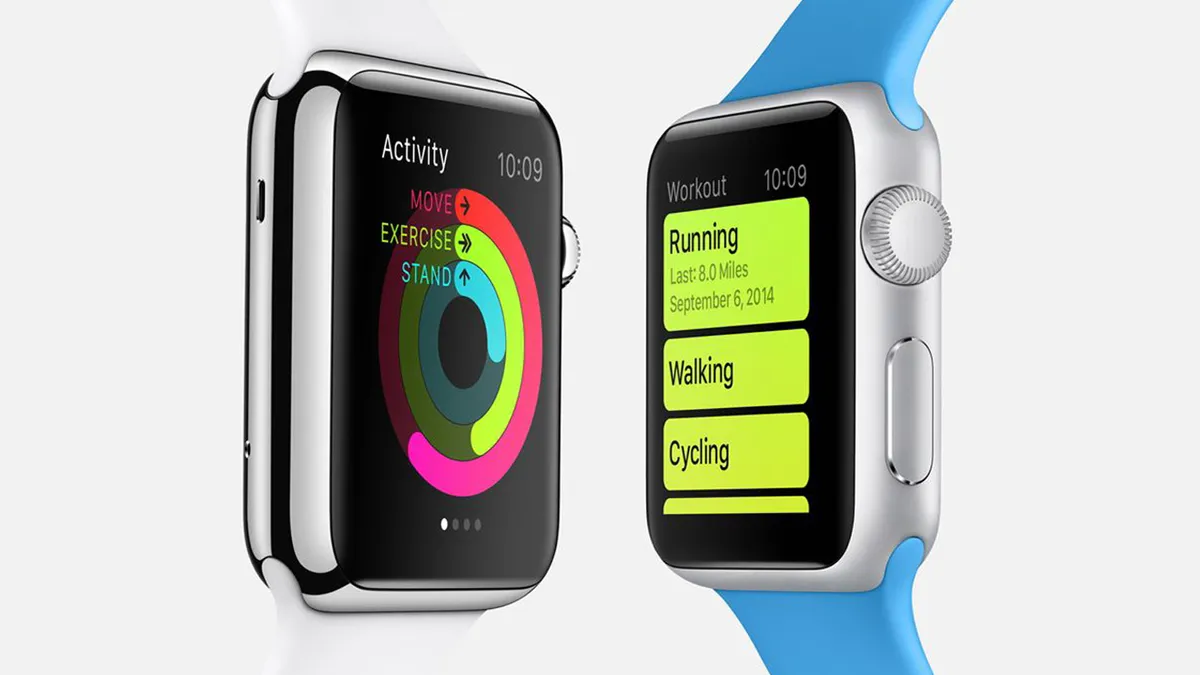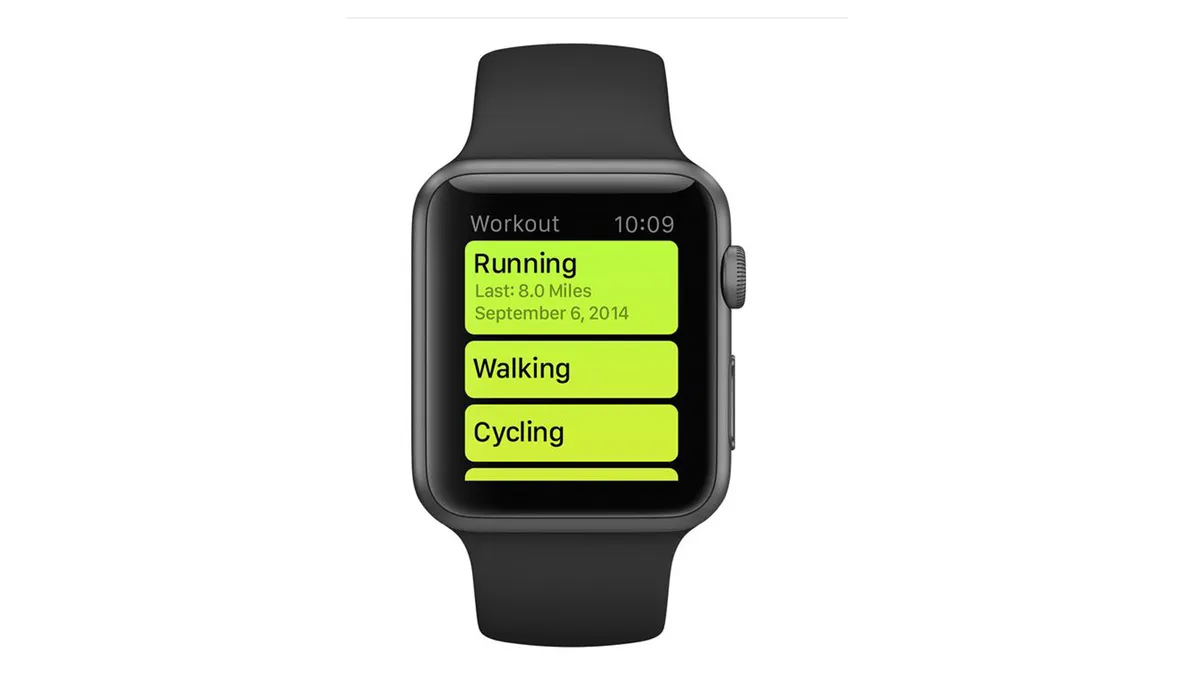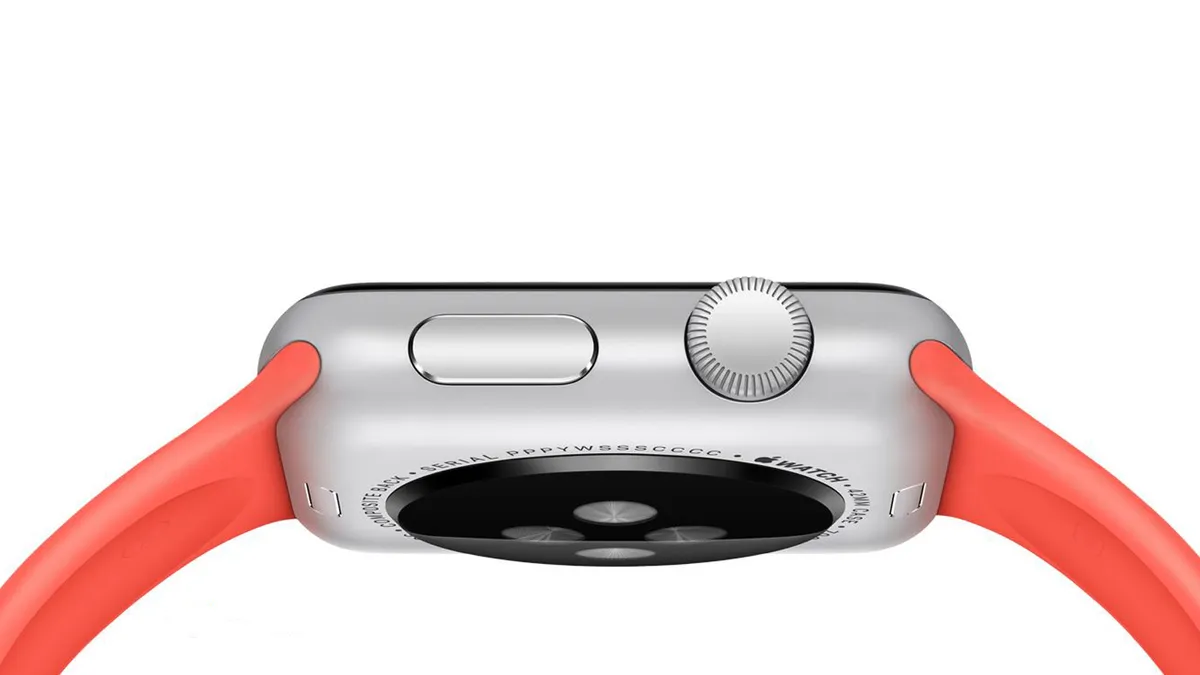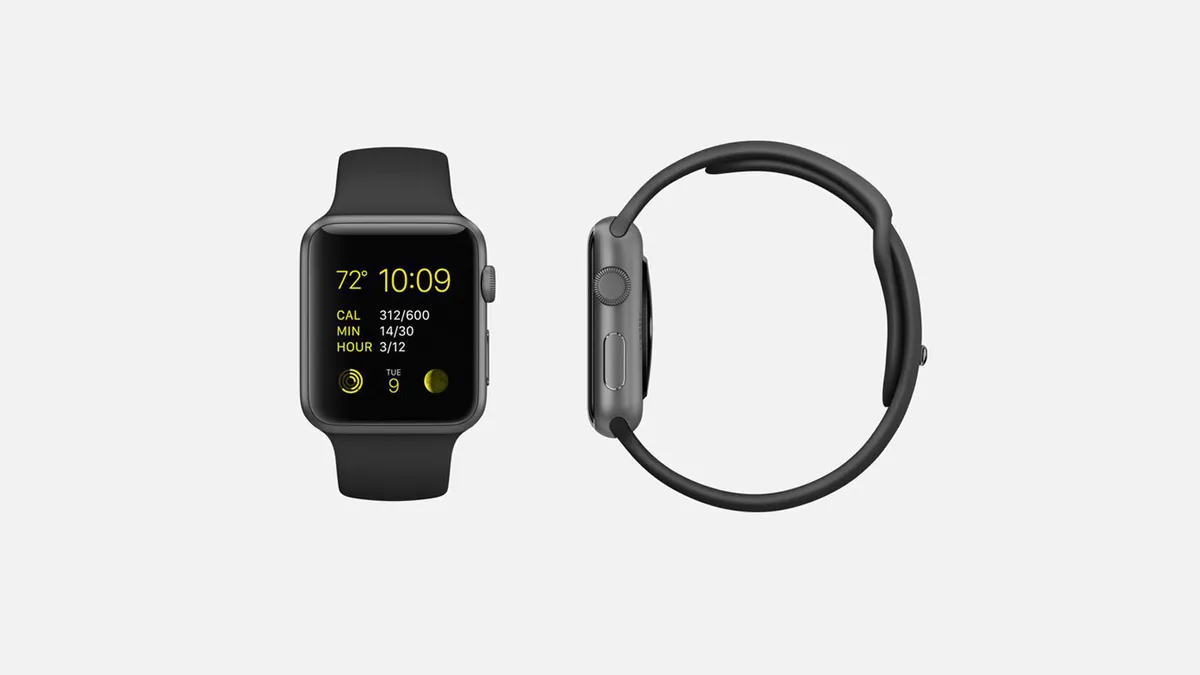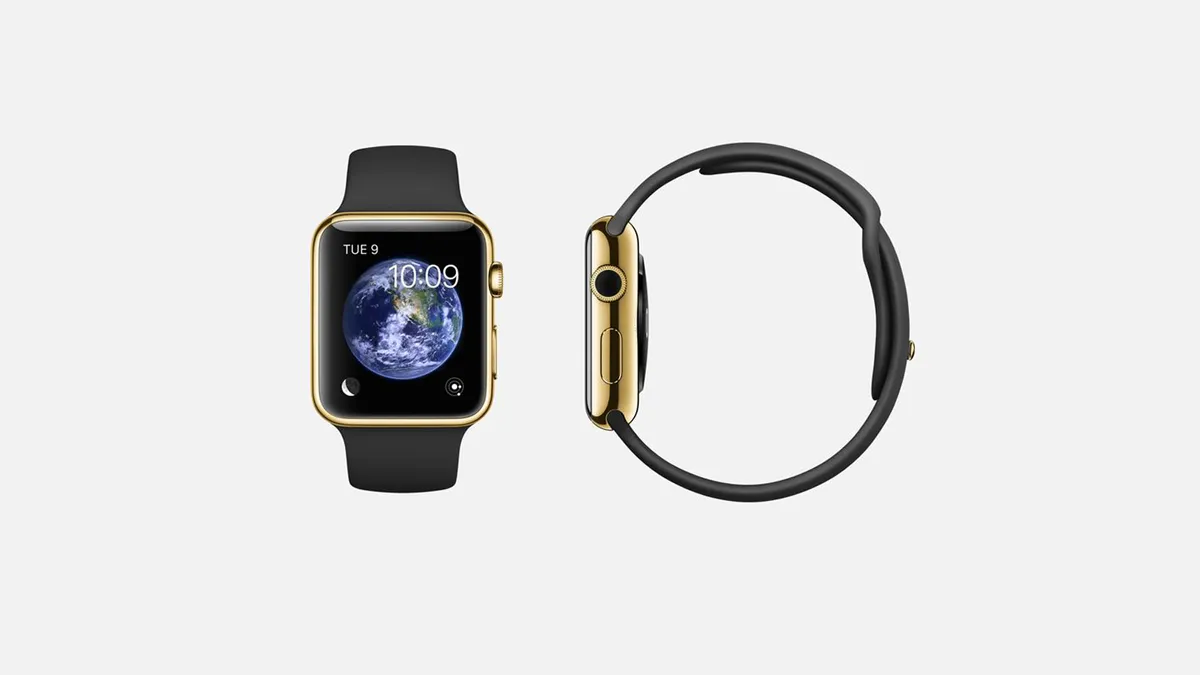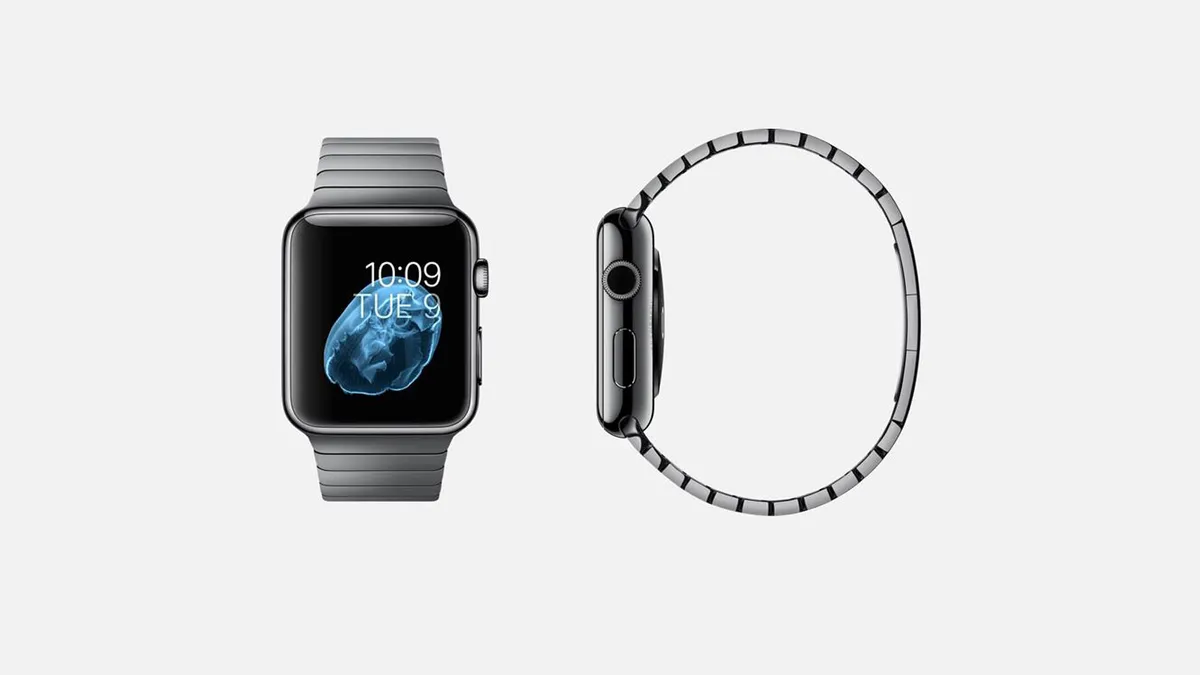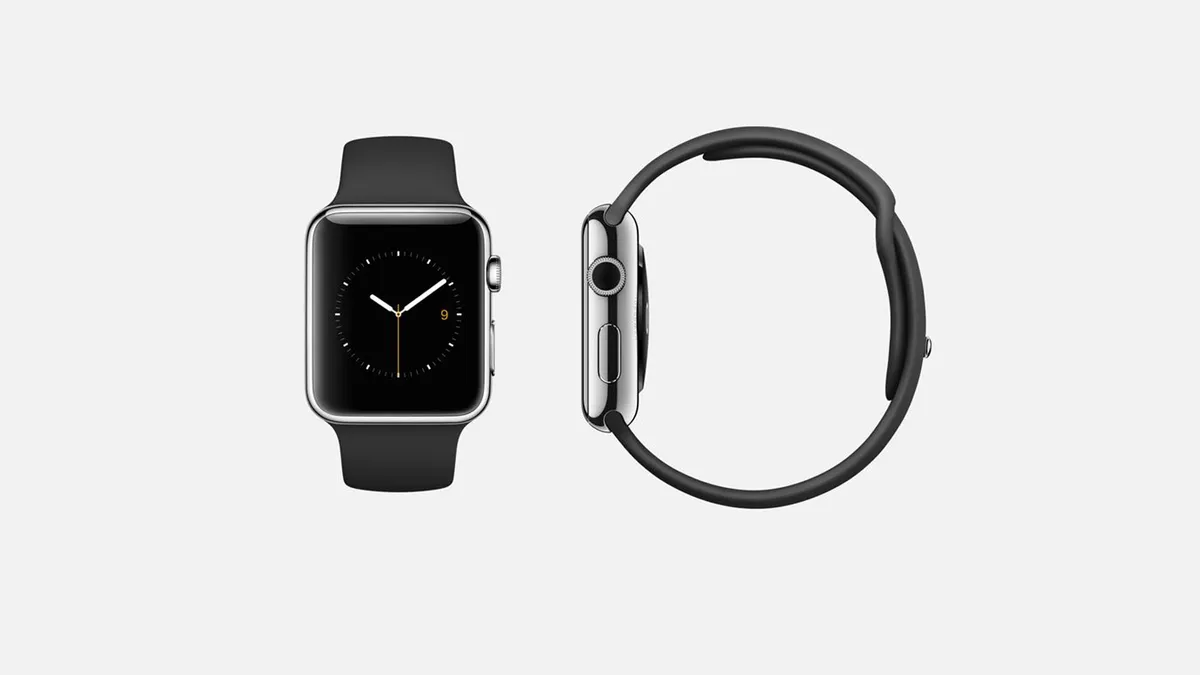The Apple Watch is due for a big launch later today with full features and worldwide retail prices to be confirmed. While the Apple Watch Sport, the company's sweat-friendly edition of its new smart-watch, might be designed to catch a broad demographic of active people, there's plenty of technology and features that could make it very useful for cycling.
Apple's Watch Sport will be going head to head with the likes of the Garmin Edge 920XT, Motorala’s Moto 360 and Samsung’s Gear S. Given Garmin's dominance in the the sports sector, it'll be an interesting battle once Apple joins the scene.
Meanwhile, Apple's latest smartphone, the iPhone 6 offers cyclists better battery life, a barometer for more accurate elevation data and lighter weight. Read all about how the iPhone 6 and iPhone 6 Plus fare for cyclists below our Apple Watch Sport coverage.
Apple Watch
Much more than a Bluetooth-connected screen such as the Magellan Echo or an ANT+ ready Garmin Vivo fitness tracker, the Apple Watch joins the likes of Motorala’s Moto 360 and Samsung’s Gear S in the quickly heating up smart-watch market.
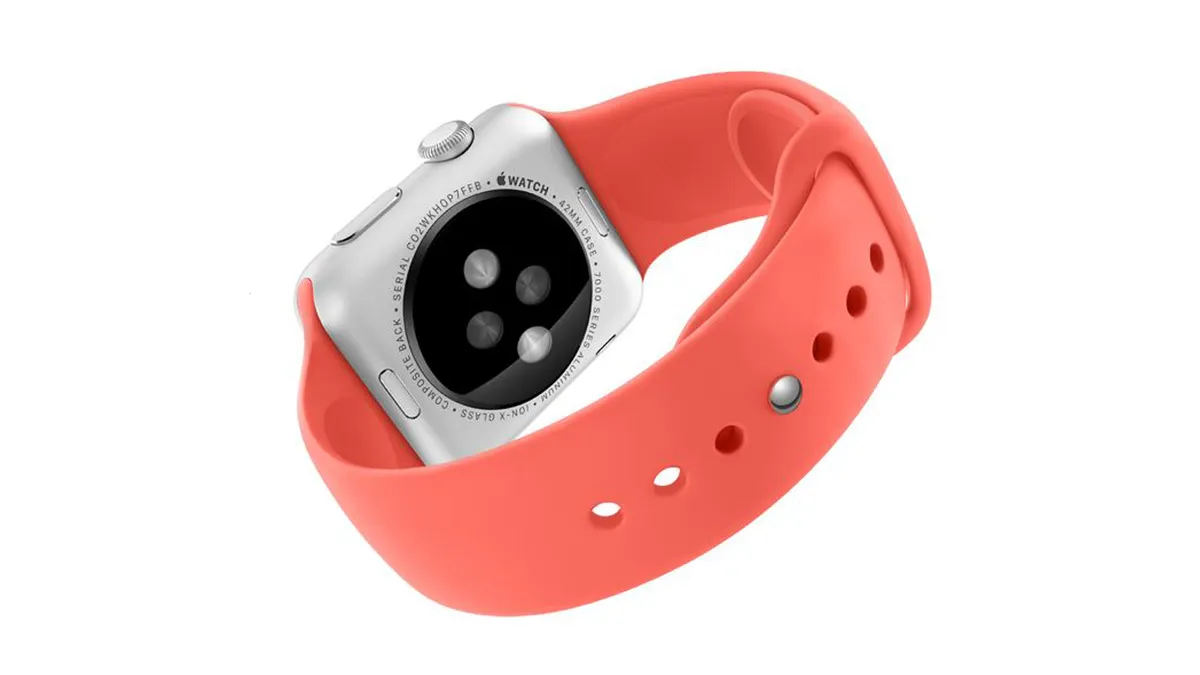
There's a heart rate sensor at the back of the Watch
The Watch features an in-built heart rate monitor at the back, using “infrared invisible light LED’s along with photo sensors” according to Apple. With a built-in gyroscope and accelerometer, the Apple Watch will work to count steps or provide basic riding information, but the features for cycling will be obvious once connected to the GPS and data of an iPhone.
Apple’s own Fitness app looks to offer a cycling feature along with other activity-specific features which should prove useful for newer and more recreational level riders. For those seeking a little more info, we suspect popular third party apps such as Strava, MapMyRide and Wahoo will come to the table too.
Being Bluetooth, further data is readily available when run through the phone, with a large range of compatible cycling accessories already on the market including power meters from Stages and PowerTap; and cadence/speed sensors from Wahoo and Bontrager.
A couple of other features we could see being useful are the control of music, spoken turn-by-turn directions and receiving of phone calls/text messages. Additionally, the Watch can act as a screen for the phone’s camera – while this isn’t likely useful for cycling, the thought of being able to do the same with a GoPro or similar is an intriguing idea.
Beyond the pressure sensitive touch screen, the ‘Digital Crown’ – the dial on the right of the watch – allows you to zoom and use drop-down menus on such a small device, while pressing it works as the home button.
A button below the Digital Crown acts as a way to bring up your closest contacts and share quick information with them. We see this as a useful feature to quickly let loved ones know where you are, and if it all goes wrong – easily and quickly call for help. Apple is even claiming that you can transmit your heart beat to contacts. In addition these already existent features, we speculate that some form of crash sensor application similar to that of ICEdot could be implemented.
Unlike its competitors, the Apple Watch is available in three distinct versions; Watch, Watch Sport and Watch Edition. All three versions will be available in two case sizes, 38 and 42mm and with two different wrist band sizes too.
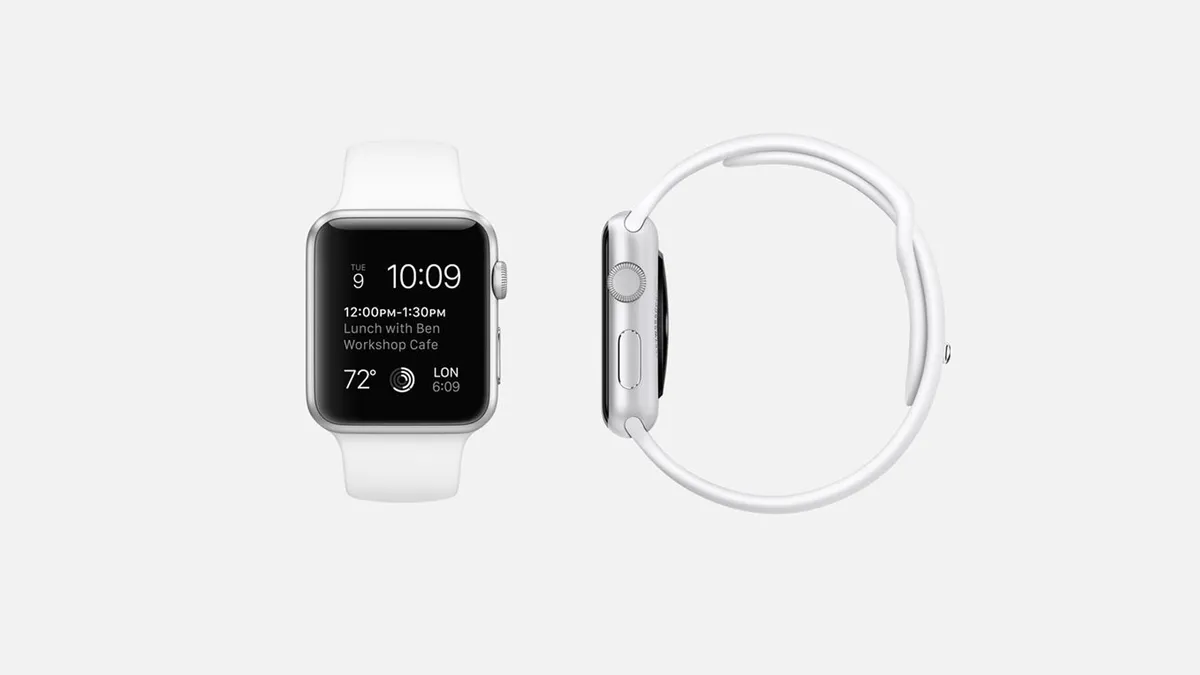
Apple Watch Sport
The Apple Watch Sport is the one that will most likely appeal to the active types, made from an aluminium case with a lightweight ‘Ion-X’ glass, it’s claimed to be 30% lighter than the standard Watch with its Stainless Steel case and Sapphire glass and surely plenty lighter than the 18-carat gold Watch Edition.
A range of six easily interchangeable strap designs (each in multiple colours) are a big feature of the new watch, but it’s the sweat and chemical resistant elastomer Sport Band that will get the most use for fitness activities. With the easy snap-in strap design, we suspect we'll see a few aftermarket handlebar or stem mount accessories being offered too.
A sealed design, the watch’s back is where the proprietary inductive charger connects. Battery life is not yet known, but the claim is for all-day longevity with charging each night.
The watch will have its full reveal later today, with retail at prices starting from US$349 (UK and Australian prices to be confirmed). We'll get our hands on one for review as soon as possible.
iPhone 6
Beyond the usual advancements in speed, shape and camera quality, the iPhone 6 (and large-format iPhone 6 Plus) has a few new features which may prove useful when cycling.
The iPhone 6 gains an ‘M8’ processor which sits alongside the new A8 chip, an advancement to the fitness-friendly M7 motion co-processor introduced in the iPhone 5S. Now with a barometer, this could be a useful addition for those seeking greater accuracy in elevation.
Battery longevity is said to be increased too, which will be positive for anyone using their phones with external accessories and on longer rides.
Currently only available in the US, Apple Pay may be a handy way to pay for mid-ride emergency Clif bars or post-ride lattes.
Screen durability is another thing that should prove beneficial for those that do take their phone riding, with Apple claiming the new phone will withstand for more knocks and drops than previous editions.
